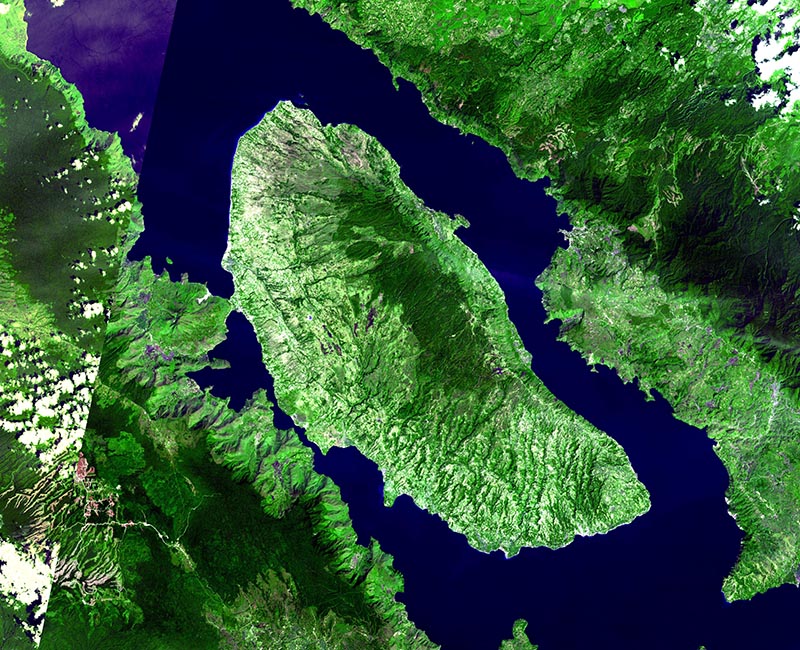King Phillip came over for good soup (or salsa, or spaghetti). No matter what your favorite comfort food is, many of us had to memorize this silly sentence in school to remember the seven taxonomic levels of life — kingdom, phylum, class, order, family, genus, and species. In case you haven’t seen those words in a while, they are part of a method for classifying life on Earth.
There are several variations on this system in use today to capture even more complexity. For example, we have a level higher than Kingdom called “Domain” of which there are three – Bacteria, Archaea, and Eukarya. The single-celled bacteria belong to Prokarya, while multi-celled humans, plants, and animals belong to Eukarya. Archaea are single celled like bacteria, but also have some characteristics in common with Eukarya. They have also been around on Earth much longer than Eukarya and can live in some pretty inhospitable environments, like volcanoes, hot springs, and the dark depths of the ocean. The Tree of Life, developed by scientist Carl Woese in the 1970s, shows us that most life on Earth is microscopic.

Source: Wikimedia Commons
Biodiversity – the variety of species on the planet – is only one way of describing life. Scientists at the Weizmann Institute of Science in Israel and the California Institute of Technology were the first to estimate how many tons of life are in each kingdom. How did they possibly accomplish this? First, they had to choose a measurement unit.
You may hear the word “organic” mainly to describe food produced without pesticides. You may not know that organic also has a more general meaning. It refers to any molecule, also called a compound, that contains carbon atoms. So far, there hasn’t been a living thing found that does not contain carbon compounds. Human beings are organic just like plants and animals. Carbon-based life is also called “biomass.”
Unless you have the world’s largest scale and easy access to all life on Earth, the total biomass of the planet can’t be measured directly. Instead, the researchers read hundreds of scientific papers that described the major kingdoms of life, their average weights, where they like to live, and how much land those habitats take up. They estimated that living things are about half of their dry weight in carbon. They were able to use mathematics to combine these data into a rough estimate of carbon-based biomass in gigatons (1 billion tons).
For example, if the typical earthworm weighs 10 grams, and earthworms prefer moist soil in warm climates, and you have a few studies demonstrating how many earthworms tend to be in a given area and how much of the planet has warm, moist soil, you can estimate the total mass of earthworms. We have even better information about human beings. However, this method can’t provide good estimates of anything more specific than kingdoms. When using averages and simple conversions (such as living things being half their weight in carbon), you need a very large sample size. So, at the scale of the entire planet, these estimates are reliable enough to work with.
So what did they find? They estimated that the Earth carries around 550 total gigatons of biomass. Just to get a picture in your mind, if a ton is approximately 2,000 pounds, a gigaton is 2,000 x 1 billion pounds. Believe it or not, the plant kingdom makes up 450 gigatons of that total. Bacteria claim 70 gigatons, while animals make up only 2 gigatons – and most of them live in the ocean. Seven gigatons are attributed to Archaea, those extreme-living single-celled organisms mentioned above.
Of the 2 gigatons of animals, humans make up only 0.06 gigatons. Livestock make up 0.1 gigatons, and the plants we grow for food make up 10 gigatons. Recall that plants make up 450 gigatons of the Earth’s total biomass, so our crops don’t count for much by comparison. In general, humans and our food supply still make up a very small fraction of the total biomass on the planet.
The authors briefly summarize other studies that estimated total biomass before humans, noting that it is hard to do this accurately. Despite these limitations, they suggested that wild animal loss may have been replaced by even greater gains in livestock. The total number of trees has decreased by half since human civilization arose, and our food crops don’t come close to making up the difference.
So did we kill most of the plants and animals? The authors caution us that these are only very crude estimates and on their own do not imply causality. The purpose of doing these calculations was to provide a complementary method to biodiversity as a measure of humanity’s impact on the planet. It seems as though humanity’s success as a species has changed the way life is distributed around the planet. However, these calculations remind us that nothing is ever so simple. We still know so little about what life is out there, especially at the deepest parts of the ocean. Determining if the changes we’ve made are merely noticeable or fully catastrophic requires, of course, more research.


